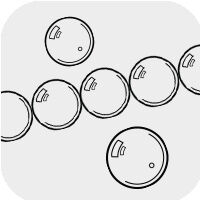Verdite
Meaning and Properties
Verdite History
Sometimes mistaken for jade, verdite is a beautiful green gemstone that was originally found in North Kaap River, South Africa. Native South Africans saw value in the softness of the stone and were able to carve the stone for use in ornamental creations and amulets. Today, verdite is still valued for its ability to be carved and used in inlay.
Verdite Metaphysical Properties
Founders of verdite in Zimbabwe believed the stone had an innate ability to promote fertility. Verdite also was used to amplify fidelity, making the stone ideal for lovers. According to metaphysical beliefs, verdite can increase individual power, without allowing harsh characteristics to overwhelm. For instance, it was believed verdite could boost strength, reliability and honesty. Verdite is associated with multiple chakras, most notably the solar plexus, heart, sacral and root. Some people use verdite to fight vertigo, while others believe the stone can help improve the respiratory and circulatory systems.
Verdite Geological Properties
Verdite is actually a trade name for a specific type of green metamorphic rock largely made up of fuchsite and fine grain clay. Fuchsite is a variety of muscovite, which is in turn part of the mica mineral group. This makes verdite closely related to other gemstones such as lepidolite. While that may sound complicated, the stone's beauty is not. The green colors of verdite are a result of chromium (that also gives emeralds their green color), though the stone can also have shades of yellow, blue-green and brown with spots or swirls. Inclusions of rutile, ruby, sapphire, quartz and tourmaline have also been found in verdite. Verdite is largely found in Zimbabwe, though the stone has also been found in other regions of South Africa.
|
|
|
|
|
|
|
|
|
|
|
|
|
|
|
|
|
|
Proper Care of Verdite
Since verdite is such a soft gemstone, you'll want to be careful when handling it. Even dust can potentially scratch the surface of verdite with its low Mohs hardness of 3. For this reason, simply wiping away dust is not best practice. To clean verdite, use mild soapy water and a soft, clean cloth free of any dust or impregnations. Rinse verdite well and allow the stone to fully dry. Avoid exposing verdite to chemicals or excessive heat, meaning harsh cleaning methods such as boiling, ultrasonic cleaners and steamers are all out. It is best to remove verdite jewelry before exercising (due to sweat) or cleaning (so cleaners can't splash onto it). Store verdite stones and jewelry away from other harder materials by wrapping them in soft clothes or placing them on their own velvet-lined jewelry tray.
To learn more about verdite and other gemstones, order your copy of Walter Schumann's revised and expanded edition of Gemstones of the World.
Designing with Verdite
Verdite's softness makes it ideal for cutting into cabochons, though it is also sometimes made into beads and other components. Verdite can resemble an abstract canvas with varying colored patterns as beads, making each a unique addition to jewelry. The natural hues play well with other earth tones such as beige, brown, green and reddish-orange. This also makes verdite incredibly versatile for using in both men's and women's jewelry as the color is not associated with any one gender. Due to verdite's softness, it is used less often in bracelet and ring designs since these types of jewelry are more likely to accidently incur impact. Necklaces and earrings are the safest bet for verdite jewelry creations.
View more resources featuring verdite, including Design Ideas, Videos, Tutorials and more!
Shop for Verdite
**Please note that all metaphysical or healing properties listed are collected from various sources. This information is offered as a service and not meant to treat medical conditions. Fire Mountain Gems and Beads® does not guarantee the validity of any of these statements.
How did you like this resource? Your feedback helps us provide resources that matter to you most.
Copyright Permissions
All works of authorship (articles, videos, tutorials and other creative works) are from the Fire Mountain Gems and Beads® Collection, and permission to copy is granted for non-commercial educational purposes only. All other reproduction requires written permission. For more information, please email copyrightpermission@firemtn.com.

